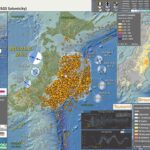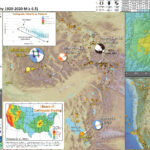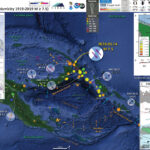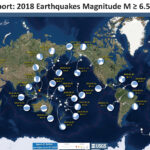This year we look back and remember what happened ten years ago in Japan and across the entire Pacific Basin. There are numerous web experiences focused on this type of reflection. Here is a short list, some of which I…
Earthquake Report: Idaho!
Well Well Well Yesterday there was a very interesting magnitude M 6.5 earthquake that ruptured in central Idaho, near the Sawtooth fault. https://earthquake.usgs.gov/earthquakes/eventpage/us70008jr5/executive Idaho lies in the intersection of several different physiographic provinces. Physiographic provinces are areas of Earth that…
Earthquake Report: 2010 Haiti M 7.0
This is the ten year commemoration of the 2010 magnitude 7 earthquake in Haiti that caused widespread damage and casualties, triggered thousands of landslides, caused tsunami, triggered a turbidity current, and caused thousands to be internally displaced. https://earthquake.usgs.gov/earthquakes/eventpage/usp000h60h/executive Here I…
Earthquake Report: New Ireland
This region of Earth is one of the most seismically active in the past decade plus. This morning, as I was preparing for work, I got an email notifying me of an earthquake with a magnitude M = 7.5 located…
Earthquake Report: 2018 Summary
Here I summarize Earth’s significant seismicity for 2018. I limit this summary to earthquakes with magnitude greater than or equal to M 6.5. I am sure that there is a possibility that your favorite earthquake is not included in this…
Earthquake/Landslide/Tsunami Report: Donggala Earthquake, Central Sulawesi: UPDATE #1
We continue to learn more each day as people collect additional information. Here is my initial Earthquake Report for this M 7.5 Donggala Earthquake. In short, there was an earthquake with magnitude M = 7.5 on 2018.09.28. Minutes after the…
Large Aftershock in Nepal: 2nd Update
Well, there have been a few more aftershocks over night… Here is my first post about these aftershocks (I provide more links to the USGS web sites). Plus, the USGS has inverted the seismic data to estimate a fault plane…
Large Aftershock in Nepal
We just had a large aftershock to the east of the mainshock. The PAGER estimates are currently suggesting that there will be additional casualties. Regions that were destabilized (hillsides, buildings, etc.) from the main shock, but were not in areas…
Update Commentary on the OSO Slide: Scott Burns
Scott Burns, emeritus at Portland State and a student of Peter Birkeland, wrote an excellent article about the OSO Slide. I made a few animations and armchair interpretations about this slide shortly after it happened (here). Scott discusses the geologic…






